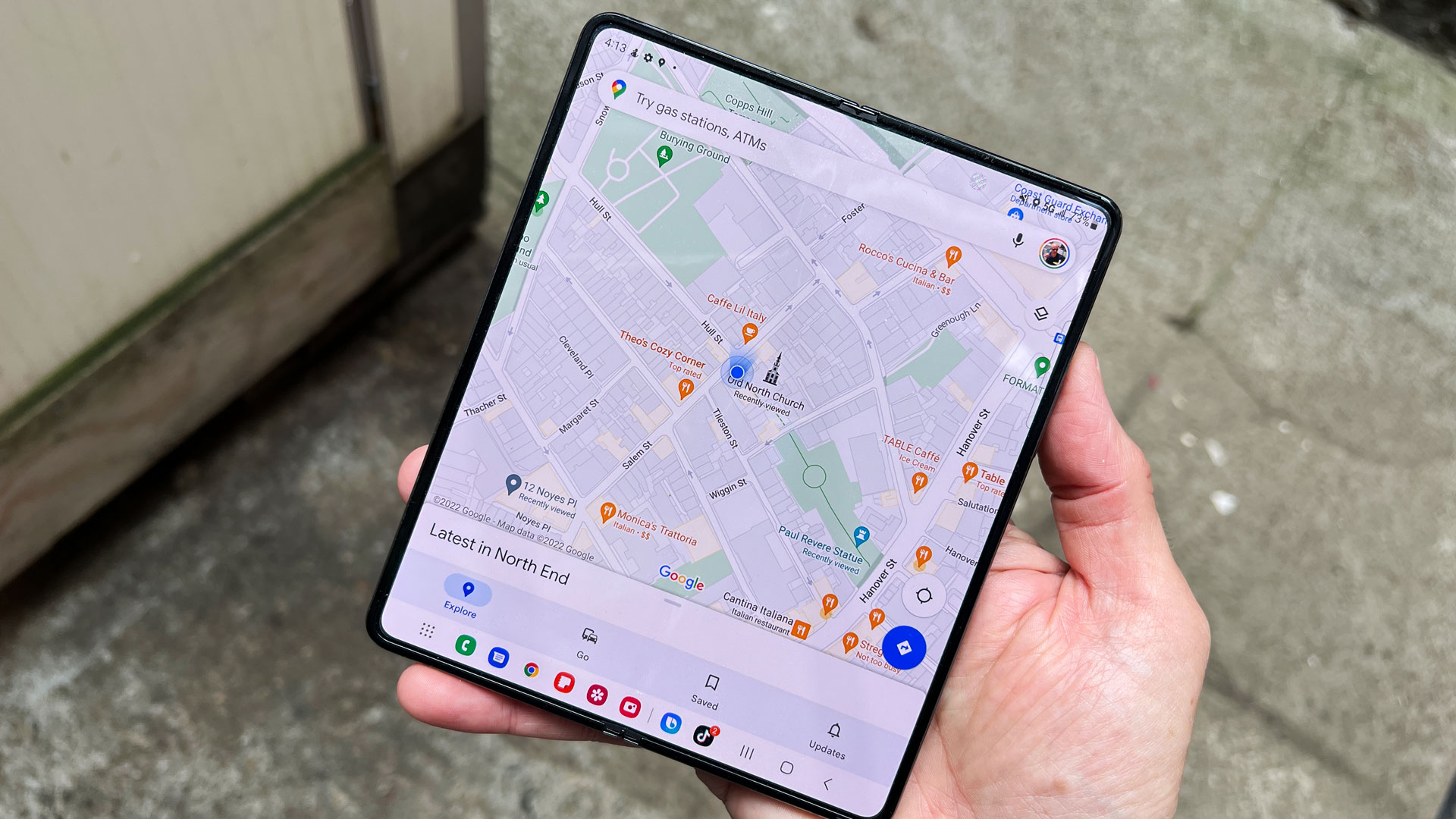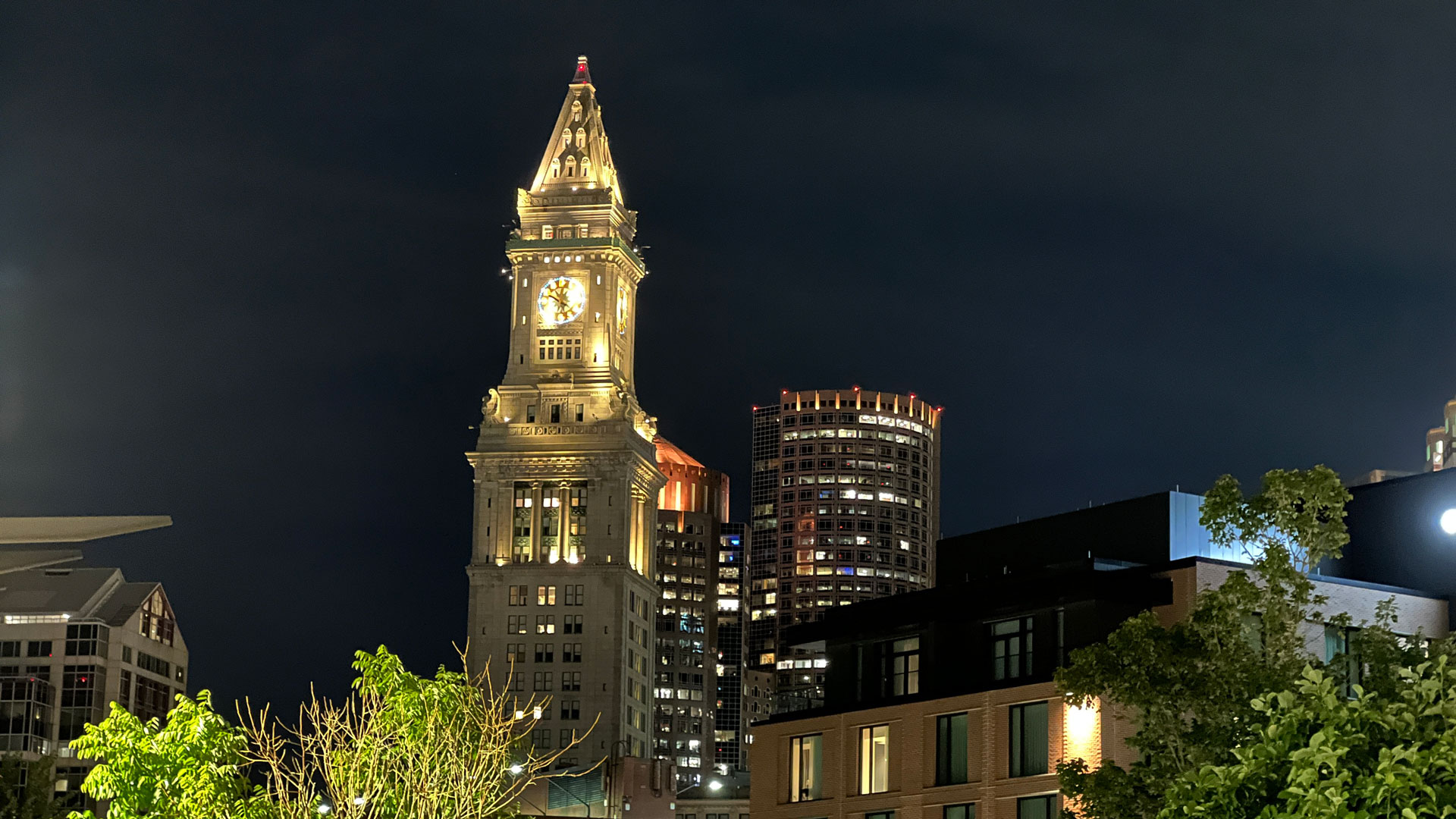This might be Samsung Galaxy Z Fold 4's killer app
The Galaxy Z Fold 4 is the perfect paper-map replacement

Samsung Galaxy Z Fold 4's flexible, 7.6-inch foldable display is more than just a flashy screen innovation; it's an incredibly practical tool that, on more than one occasion, saved my vacation or, rather, saved me from myself.
Having reviewed the Samsung Galaxy Z Fold 4 right before the start of my trip to Boston, I was already impressed with its build, design, flexibility, and productivity. The phone's slightly wider and now more usable 6.2-inch cover screen makes the whole device feel, well, more normal. But it's when you unfold the Android 12 device to its full 7.6-inch AMOLED glory that you discover the phone's potential.
For anyone who's ever used a tablet - yes, including an iPad mini -- this is a "duh" moment. Naturally, a larger screen means you can see more expansive views of apps like TikTok and Safari than you might on your favorite flagship smartphone. The Z Fold 4 even supports multiple apps on the same screen. But this was my vacation, how much use would I have for a pair (or more) of split-screen apps?
Get lost
I like to think I have a decent sense of direction. I also like to think of myself as 6-ft tall. Neither of these statements is true, no matter how much I lie to myself. The reality is I often take the wrong turn, and when on vacation or even on a business trip in an unfamiliar state or country, I get lost.
Before the advent of GPS and turn-by-turn navigation, I relied on maps.
In my case, we had a big flip one for our county and, if we planned a trip out of state, took along multiple maps that you could unfurl to roughly the size of a typical United States of America flag that you might hoist on a flagpole over your house.
They were big, and unwieldy, but had the benefit of giving you a glanceable worldview of your surroundings or destination. Your head could swivel left to right or up and down to scan miles and miles of terrain. "Zooming in" meant getting your face closer to the map or even using a magnifying glass.
Sign up for breaking news, reviews, opinion, top tech deals, and more.
For all their impracticality, these old maps were useful and used with such frequency that they often wore through along the folds until some parts of Kansas (sorry, Topeka!) were permanently lost to wear and tear.
Initially, the advent of the Internet did not mean the end of maps. Instead, we used MapQuest to plan trips and then printed out maps and detailed turn-by-turn directions.
Eventually, GPS devices and later phones killed paper maps for good. On the one hand, hurray, we saved some trees. On the other, we've settled for incredibly small screens to substitute for our once front-seat-of-the-car-sized paper maps.
Finding my way

When you're lost, zooming in an out of a smartphone screen - even a 6.7-inch one - feels cramped and, to me at least, confusing.
As my wife and I wandered around Boston, a city without a complete and instantly grokable street grid, we (or should I say "she," as in my wife) grew increasingly frustrated with my confusion. I just couldn't seem to make the right turn, at one point taking us in a complete circle around a park and not even realizing I had done so.
Finally, I pulled the Samsung Galaxy Z Fold 4 out of my pocket (no, it's not heavy or bulky to carry around all day), unfolded it, and opened Google Maps.
Staring at the edge-to-edge display and its full-screen cartography, I felt instantly oriented. There was my blue dot and a fading blue fan indicating my direction on the map. Even as I held the tablet-sized display in one hand, I felt transported to a different time, one where I could pull a folded map out of my back pocket, unfold it, and glance at its big paper surface to quickly get a sense of where I was in the scheme of things.
This makes sense
As we walked and found our way to various destinations, I didn't feel the least bit conscious holding the Galaxy Z Fold 4 in my hand and watching as we expertly traversed the deep blue line. Even with a quick look, I could tell on the big screen when we strayed from the path.
Getting lost suddenly became as inconceivable as folding displays once were.
I know what you're thinking: "This is an edge case. Every phone has GPS and maps. How often are we traveling or, like you, getting lost?"
That's fair. Most people buying folding screen devices, especially ones that can open up into tablet-sized displays, probably never used a paper map. Gen Z certainly hasn't. But I think we're all capable of getting lost and, when you're confused, looking through a tiny window (a small phone screen) to see the wider world is unlikely to relieve that confusion.
We're constantly in search of more information. Certainly, our computer use reflects that as more and more of us use multiple screens at home and in the office. We simply can't see our whole world through one laptop, desktop, or even tablet screen.
Phones may seem different. As portable technology, they must be small enough to fit in a pocket. The trade-off is always going to be screen size - until it isn't.
Flexible displays mean that screens of almost any size can be hidden in much smaller devices. Once we have them, as they now exist in the Samsung Galaxy Z Fold 4 and Samsung Galaxy Z Flip 4, we will find a use for them, as I did with my vacation and Google Maps.
I really don't know how I'll ever go back to navigating with a tiny, standard, smartphone screen.

A 38-year industry veteran and award-winning journalist, Lance has covered technology since PCs were the size of suitcases and “on line” meant “waiting.” He’s a former Lifewire Editor-in-Chief, Mashable Editor-in-Chief, and, before that, Editor in Chief of PCMag.com and Senior Vice President of Content for Ziff Davis, Inc. He also wrote a popular, weekly tech column for Medium called The Upgrade.
Lance Ulanoff makes frequent appearances on national, international, and local news programs including Live with Kelly and Mark, the Today Show, Good Morning America, CNBC, CNN, and the BBC.